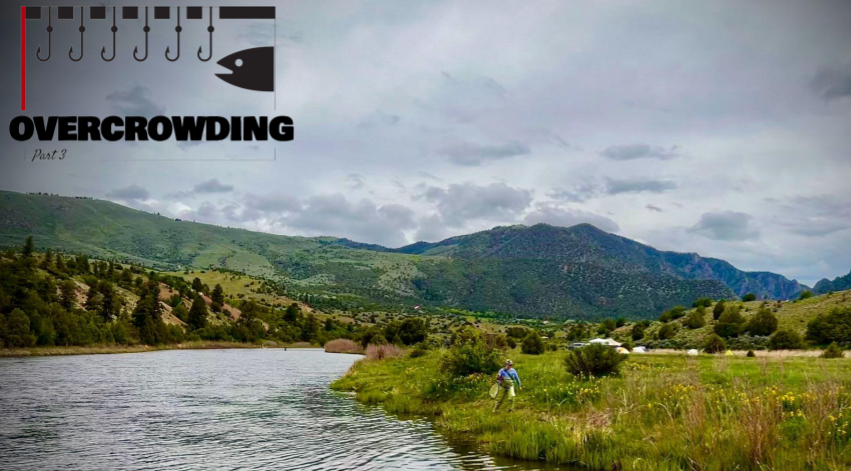Overcrowding 3) How Did We Get Here? Over Reliance on Blue Ribbon and Gold Medal Fisheries
So how do fish respond to increased fishing pressure? Plus how does catch and release affect their behavior?

Welcome to our series on overcrowding, examining how we got here and where we go next to find new solitude.
Even a rainbow trout can only take so much harassment. So how do fish respond to increased fishing pressure? Plus how does catch and release affect their behavior?
If you're interested in fishing, especially fly-fishing, you've likely heard about, felt influenced by, or even practiced catch and release. It has been said that catch and release fishing allows anglers to "best" nature (catch the fish) and be "healed" through nature (release the fish). Yet, by practicing catch and release (C&R) we actively alter our favorite C&R rivers and lakes by influencing the dynamics of the fishery. Several groups of scientists have studied the effects of C&R and I believe these findings are worth highlighting.
There is strong evidence that exploited fish (subject to C&R) adjust their behavior in response to human entanglement, inducing more timid behavior. This has been studied in many freshwater fish species, including bass, pike, and trout. Timidity leads fish to favor refuge habitat over navigating the open water column, making fish harder to find and stalk. Some researchers even went as far as to say that restricting access may be required to maintain naivety in fish populations and maximize quality angling experiences (i.e., catching many fish instead of one or none on an outing). A bold claim, especially when considering that many of the famous western trout tailwaters are C&R rivers with public access. The overwriting message is that fish are forced to rapidly learn and tamper bold behavior in intense C&R environments. Another researcher, and his team of anglers... I mean scientists... found that sustained angling for 8 hours per day led to a drop in catch rates in as soon as 7-10 days. When you think about highly-pressured famous waters, some stretches surely experience this type of prolonged angling exposure, especially in the summer and fall months. Others might even face prolonged angling pressure year round.
There is even some evidence that timidity is passed down through generations. If bold behavior in fish (like chasing lures and flies) leads to more encounters with anglers, then that fish might have expended too much energy eluding its captor that would otherwise be spent on foraging or survival. As a result, excessive fatigue could decrease a trout's fitness: their ability to successfully reproduce. This is usually why you hear suggestions to leave spawning fish alone.
These bold fish are less likely to pass on their genes to the next generation, while the timid fish, who adapted to angling pressure by learning to avoid anglers, are more likely to pass on their timidity to the next generation. But, bolder fish are what anglers want to catch. Bold behavior, without C&R pressure, promotes greater foraging, and thus larger size. These are the fish people want to catch! …Hence all the stocking of rainbow trout that we discussed in Part 2.


